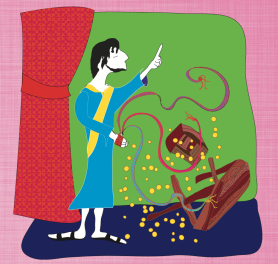
 This week's lesson comes from John 2:13-15 where Jesus sees people turning God's house of worship into a den of robbers. This upsets Jesus greatly so he makes a whip and drives the vendors out of the Temple. You can read the story from an ESV bible or you can turn to Story 86 in the Gospel Story Bible. Be sure to download this week's Family Worship Guide for conversation guide, prayer suggestions and this week's catechism questions!
This week's lesson comes from John 2:13-15 where Jesus sees people turning God's house of worship into a den of robbers. This upsets Jesus greatly so he makes a whip and drives the vendors out of the Temple. You can read the story from an ESV bible or you can turn to Story 86 in the Gospel Story Bible. Be sure to download this week's Family Worship Guide for conversation guide, prayer suggestions and this week's catechism questions!
Here are a few teaching points to help you disciple your kids:
God’s house is for worship alone—The Passover was at hand, and many Israelites needed to purchase animals for sacrifices. Those with foreign currency needed to change their money. The moneychangers and merchants set up shop right in the temple. The temple was the center of Jewish life. It was the place where God’s presence lived among the people. These shopkeepers were more interested in making money than worshiping God. When Jesus arrived at the temple and saw that it was now a marketplace, he became righteously angry. To help the people see their sin, he made a whip of cords, drove the shopkeepers and their animals away, and overturned the tables of the moneychangers. He was trying to help them see that God’s house was not a marketplace. Just being in the temple didn’t mean you were praising God.
The Jews demanded a sign—The Jews demanded a sign from Jesus to prove his authority for clearing out the temple. Jesus answered them by saying that if they destroyed the temple, he would raise it up in three days. It had taken forty-six years to build the temple, and it wasn’t yet finished! It wasn’t until after the resurrection that the disciples realized Jesus was talking about the temple of his body. Even though the Jews of that time had Jesus right in front of them, they still rejected him. And what greater sign could one ask for than to see Jesus, the King of Glory and Savior of the world?
Jesus could see the motive of their hearts—When Jesus drove the merchants and moneychangers out of the temple, he called it his “Father’s house.” The Jews demanded a sign of his authority to do this. After cleansing the temple, Jesus remained in Jerusalem for the Passover. In Jerusalem he performed signs, and many believed in his name, but Jesus did not entrust himself to them because he knew their hearts. Just because you say you believe, doesn’t mean you are trusting God in your heart. Though the people said they believed, Christ knew their hearts were cold toward him.
As you talk about this passage with your children, show them the bigger picture of how this story fits into God's big story of redemption:
Only after his resurrection did Jesus’ disciples understand what he was talking about when he told the Jews that he could rebuild the temple in three days (John 2:22). People hurled insults at Jesus during his crucifixion, mocking what he said about the temple (Matthew 27:39–40).
Jesus’ resurrection validates his ministry claims. His resurrection ultimately proves he is Lord over all, including life and death. The resurrection proves that Jesus was the Son of God and that his sacrificial death on the cross broke the curse of death and sin for all who put their faith in him (Romans 6:4; 8:11).


Comments
Login/Register to leave a comment